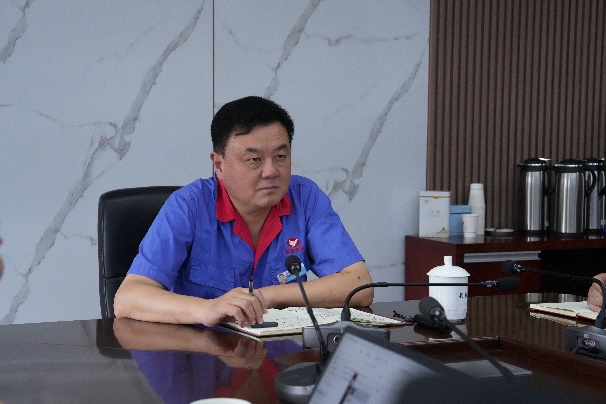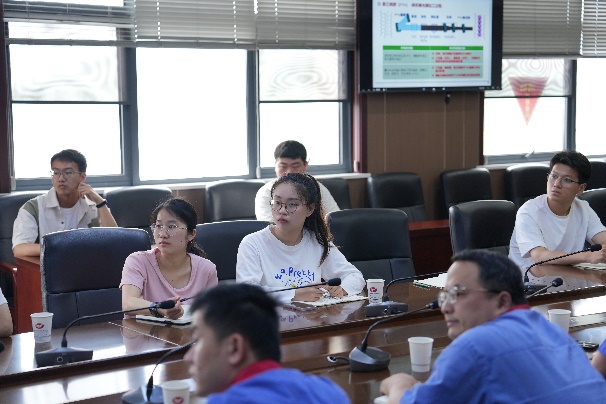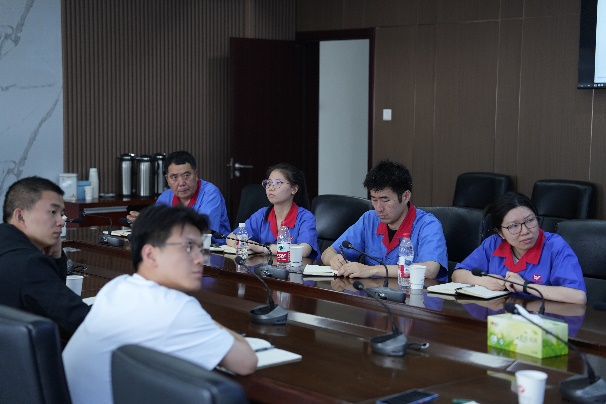On May 27, 2025, a technical exchange conference themed University-Enterprise Collaboration and Innovation was successfully held at the R&D Center of Anhui Wanwei Group. The conference focused on three major industrial chains: the PVA Optical Film – Polarizer chain, the PVB Resin – PVB Film – Automotive Glass chain, and the VAE Emulsion – Redispersible Polymer Powder / Water-Soluble Film chain. Technical experts from the Anhui Provincial Laboratory of Advanced Functional Polymer Films at the University of Science and Technology of China and core engineers from Anhui Wanwei gathered to explore technological breakthroughs across these sectors. The meeting was chaired by Mr. Wu Fusheng, Chairman of Anhui Wanwei, who emphasized that addressing the high-transmittance requirements of PVA polarizers is a critical challenge for the advancement of China’s domestic display industry.

During the PVA Optical Film – Polarizer Industry Chain session, technical teams from the University of Science and Technology of China and Anhui Wanwei conducted in-depth presentations and exchanges on key segments of the industrial chain.
Breakthroughs in Resin Synthesis Technologies:You Liangpeng from USTC introduced a new approach to developing high-transmittance base films for polarizers by focusing on ethylene-modified PVA. By adjusting the ethylene content, he demonstrated how the mechanical and optical properties of the material could be optimized, opening new avenues for raw material innovation. Guang Xin shared advancements in the synthesis of PVA with varied degrees of alcoholysis and sequence structures, laying a solid foundation for the precise control of PVA molecular architecture.

Innovations in Polarizer Processing Technologies:In the polarizer processing segment, Xie Jiayu presented a systematic introduction to iodine ion characterization methods, offering a crucial approach for evaluating polarizer performance. Li Yao investigated the effects of PVA–boric acid crosslinking structures on polarization properties, revealing key mechanisms for enhancing the optical stability of polarizing films.
Tackling Challenges in Lamination and Weather Resistance:In the field of polarizer lamination, Chen Jun and Fan Yuanwei discussed topics including water-based adhesives for high-weather-resistance polarizers and comparative analyses of UV-curable adhesives, aiming to overcome performance bottlenecks of domestically produced adhesives. Omsalma conducted weather resistance testing and failure mechanism studies, providing theoretical support for improving the long-term reliability of polarizing films.
Industry Practice and Bottleneck Analysis:Ma Rong and Wei Jiahui from Wanwei Group addressed two core challenges—“Processing Bottlenecks of High-Transmittance, High-Durability PVA Optical Films” and “Research Progress on Automotive Polarizers.” Drawing from enterprise production practices, they proposed a full-chain technological upgrade strategy from molecular design to process optimization, and called for stronger university-industry collaboration to break dependence on imported technologies.

This PVA-focused session concentrated on addressing core technological bottlenecks across the industrial chain. By deeply aligning university-led fundamental research with enterprise-level application needs, the session clarified the strategic path for improving key performance indicators such as transmittance and durability of domestically produced PVA polarizers. Looking ahead, both parties will leverage the joint laboratory platform to accelerate the transformation of scientific research into practical outcomes and promote the large-scale application of domestic polarizers in high-end displays and automotive optics.


